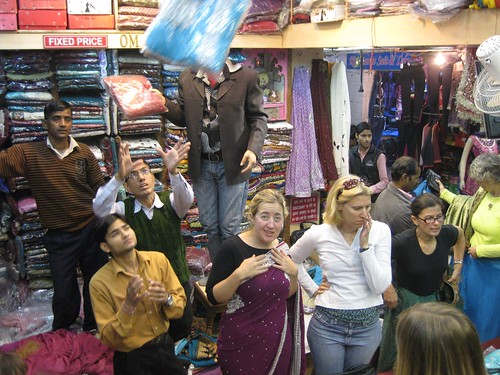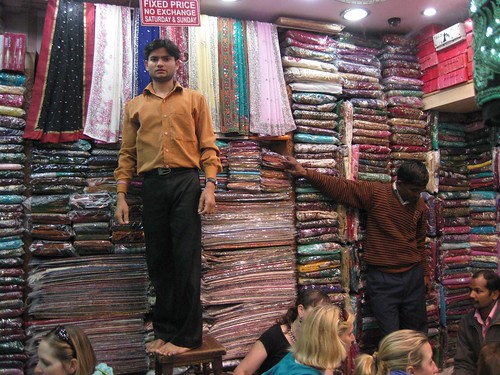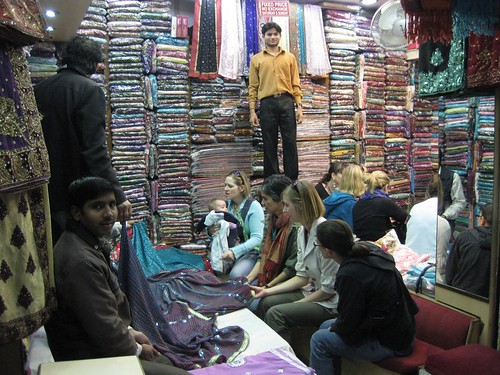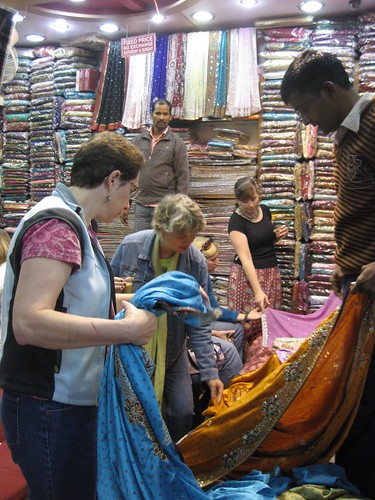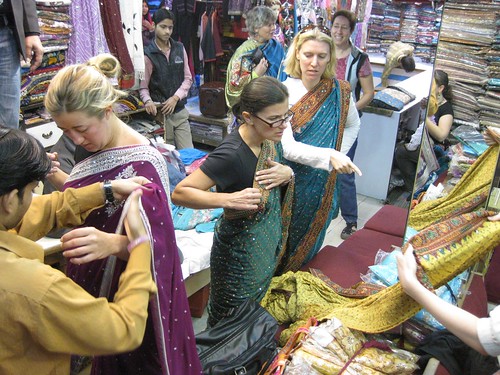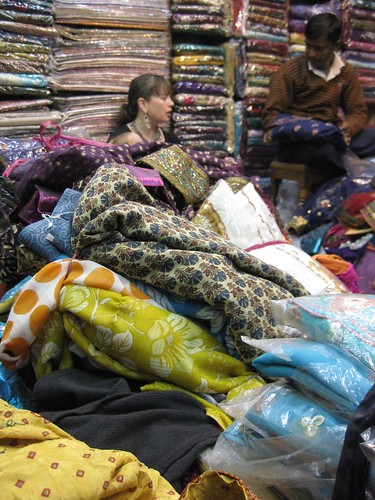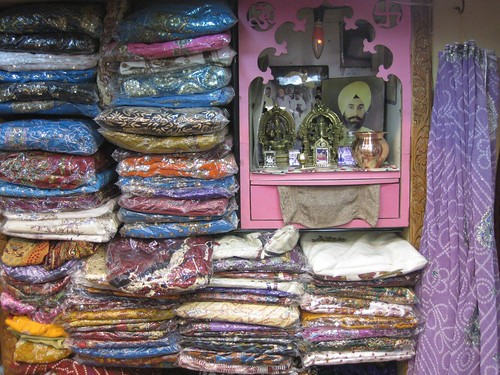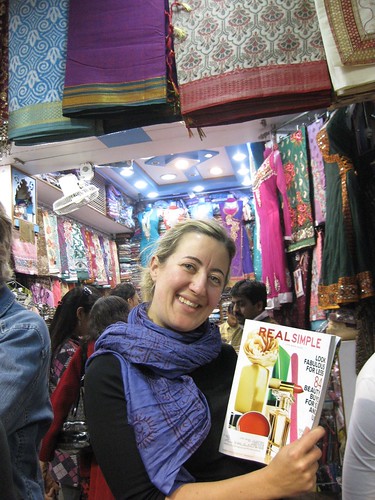Picture this: A teaching assistant on playground duty intercepts a wayward soccer ball, picks it up and hefts it back to the players. Did you picture her in an aqua-colored sari, the skirt swishing around her feet, the loose end tossed over her shoulder and flapping in the breeze? Probably not, but that’s what she was wearing!
Even after seven months in India, I remain entranced by the prevalence of women – from all walks of life – dressed in saris. The long flowing sari seems so cumbersome to me, but Indian women carry it off effortlessly and elegantly.
A sari is a long swath of fabric – up to 9 yards! – wrapped in a specific way without zippers or buttons or pins. Ladies wear a petticoat underneath with a midriff-baring top called a “choli.” Every region of India seems to have its own style of sari, not to mention all the fashion trends and myriad designers. As a foreigner who likely won’t need more than a couple saris, how will I ever choose?
Enter Skye Sanford, elementary music teacher, who has lived here for six years. Saturday morning she led 10 of us on a sari expedition to Babu Market, a section of the popular Sarojini Market. We filed in to Harish Kumar’s shop, sat on the benches and watched as the salesmen slowly pulled sari after sari off the shelves and out of their cellophane bags, unfurling miles of stunning fabric. A sari collector, Skye explained what we were seeing and steered us away from poor quality or unfortunate fashion trends (such as saris made of tulle).
Based on my experience in Turkish carpet shops (flash back to emotional meltdowns and street fights with Tony), I needed to scope out the sari scene a couple times before I buy. I was happy to watch, learn and snap some photos, but I will definitely go back. Who wants to join me?
Skye added two more saris to her collection!
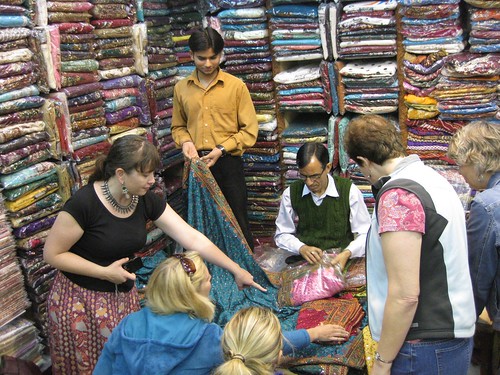
Sandra and Alicia get wrapped.
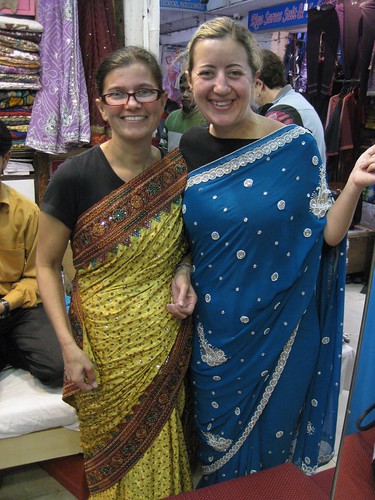
Eva looks lovely in gray … but I think she bought this style in blue.
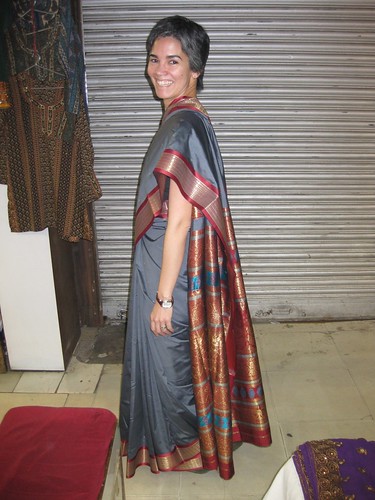
Sandra tries on another sari. You can’t do it by yourself!

The salesmen tossed saris back and forth across the shop.
